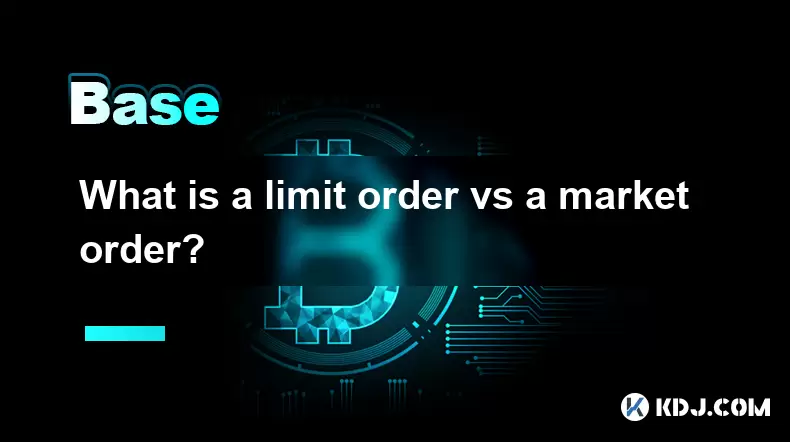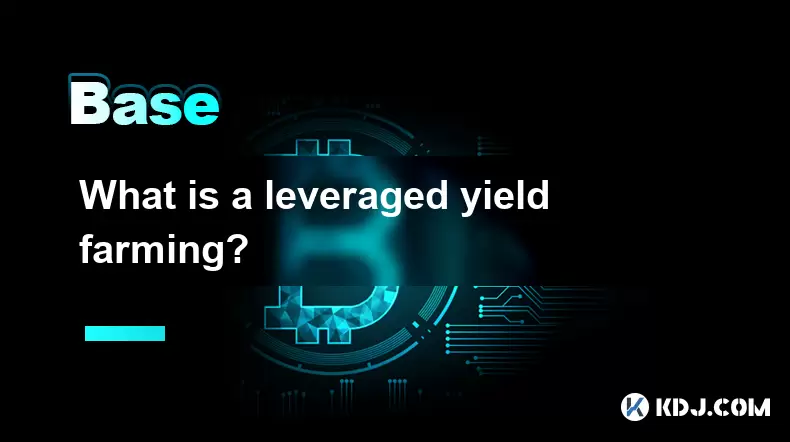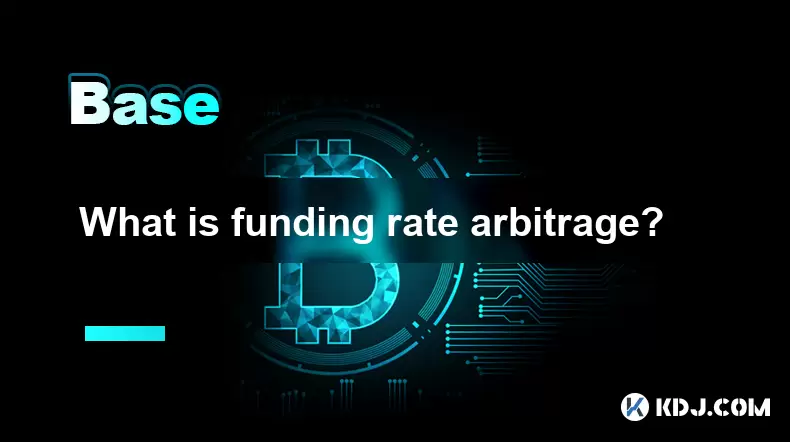-
 Bitcoin
Bitcoin $107,775.9723
-1.52% -
 Ethereum
Ethereum $2,503.0264
-2.92% -
 Tether USDt
Tether USDt $1.0004
0.01% -
 XRP
XRP $2.2122
-1.83% -
 BNB
BNB $653.0341
-0.74% -
 Solana
Solana $146.9585
-2.52% -
 USDC
USDC $1.0000
0.00% -
 TRON
TRON $0.2830
-0.44% -
 Dogecoin
Dogecoin $0.1630
-4.35% -
 Cardano
Cardano $0.5716
-3.30% -
 Hyperliquid
Hyperliquid $37.8958
-5.54% -
 Sui
Sui $2.8738
-3.68% -
 Bitcoin Cash
Bitcoin Cash $479.5293
-3.18% -
 Chainlink
Chainlink $13.0885
-4.05% -
 UNUS SED LEO
UNUS SED LEO $9.0483
0.30% -
 Avalanche
Avalanche $17.7365
-4.04% -
 Stellar
Stellar $0.2360
-2.55% -
 Toncoin
Toncoin $2.7891
-2.55% -
 Shiba Inu
Shiba Inu $0.0...01135
-3.58% -
 Litecoin
Litecoin $86.6089
-3.25% -
 Hedera
Hedera $0.1546
-2.55% -
 Monero
Monero $314.6552
-1.87% -
 Dai
Dai $1.0000
0.00% -
 Polkadot
Polkadot $3.3599
-4.40% -
 Ethena USDe
Ethena USDe $1.0001
-0.03% -
 Bitget Token
Bitget Token $4.4063
-3.62% -
 Uniswap
Uniswap $6.9380
-8.98% -
 Pepe
Pepe $0.0...09560
-4.31% -
 Aave
Aave $261.8087
-5.38% -
 Pi
Pi $0.4702
-4.48%
What is a limit order vs a market order?
Limit orders let traders set specific buy/sell prices for crypto, while market orders execute instantly at current prices, offering speed over precision.
Jul 04, 2025 at 12:43 pm

Understanding the Basics of Trading Orders
In the realm of cryptocurrency trading, understanding the different types of orders is crucial for making informed decisions. Two of the most commonly used order types are limit orders and market orders. Each serves a distinct purpose and comes with its own set of advantages and drawbacks depending on market conditions and individual trading strategies.
Limit Order refers to an instruction given by a trader to buy or sell a cryptocurrency at a specific price or better. This type of order allows traders to have more control over the execution price of their trades.
Market Order, on the other hand, is an instruction to buy or sell a cryptocurrency immediately at the current best available price in the market. It ensures execution but does not guarantee the exact price at which the trade will be executed.
How Does a Limit Order Work?
A limit order gives traders the ability to specify the maximum or minimum price they're willing to accept when buying or selling crypto assets. For instance, if you want to buy Bitcoin (BTC) at $60,000, you can place a limit buy order at that price. The trade will only execute once there's a seller offering BTC at $60,000 or lower.
- Specify Price: Traders enter the desired price for their trade.
- Order Placement: The order is placed on the exchange's order book until it matches with a corresponding buyer or seller.
- Execution: Once a matching order appears at or better than the specified price, the trade executes automatically.
This method is particularly useful for traders who wish to avoid slippage and ensure precise entry or exit points for their positions.
How Does a Market Order Work?
Unlike limit orders, market orders prioritize speed and certainty of execution over price precision. When placing a market order, traders instruct the exchange to execute the trade instantly, regardless of the current market price.
- Immediate Execution: Market orders are filled almost instantly as they take liquidity from the existing order book.
- Price Uncertainty: While the trade is guaranteed to execute, the final price may differ slightly due to rapid price movements or low liquidity.
- Liquidity Consumption: Market orders remove available liquidity from the order book, which can sometimes lead to less favorable pricing outcomes.
Market orders are ideal for traders who need immediate execution and are less concerned about slight variations in price, especially in highly liquid markets like major cryptocurrencies.
Key Differences Between Limit Orders and Market Orders
The primary distinction between these two order types lies in their approach to execution and pricing. A limit order provides price control but may not always get filled, while a market order guarantees execution but lacks price control.
- Control vs. Speed: Limit orders offer greater control over the price, whereas market orders focus on speed and certainty of execution.
- Fees: Some exchanges charge lower fees for limit orders since they add liquidity to the market, compared to market orders that remove liquidity.
- Use Cases: Limit orders are preferred during volatile market conditions or when setting target entries and exits. Market orders are suitable for quick entries or exits where timing is critical.
These differences influence how traders structure their strategies and manage risk within the crypto ecosystem.
When to Use Limit Orders and Market Orders
Deciding between a limit order and a market order depends heavily on your trading goals, market conditions, and tolerance for risk.
For limit orders, consider using them:
- When aiming for specific entry or exit points based on technical analysis.
- In illiquid or thinly traded markets where slippage could be significant.
- During high volatility when prices fluctuate rapidly and unpredictably.
For market orders, use them:
- When immediate execution is necessary, such as closing a losing position quickly.
- In highly liquid markets where slippage is minimal.
- During fast-moving news events where delaying execution could result in missed opportunities or increased losses.
Understanding these scenarios helps traders optimize their order execution strategy effectively.
Frequently Asked Questions
Q: Can I cancel a limit order after placing it?
Yes, traders can cancel unfilled limit orders at any time before they get executed. Most exchanges allow users to modify or cancel pending orders through their trading interface.
Q: Why didn’t my limit order execute even though the market price reached my specified level?
There could be several reasons, including order book depth, bid-ask spread fluctuations, or network latency. Additionally, some exchanges may prioritize orders placed earlier at the same price level, meaning yours might not get filled if there isn't enough volume.
Q: Are market orders always filled instantly?
In most cases, yes. However, during extreme market volatility or in low-liquidity markets, a market order may experience partial fills or significant slippage, leading to execution at less favorable prices than expected.
Q: Do all exchanges support both limit and market orders?
Most major cryptocurrency exchanges support both order types. However, some smaller or niche platforms may have limited functionality, so it’s important to check the features offered by your chosen exchange before trading.
Disclaimer:info@kdj.com
The information provided is not trading advice. kdj.com does not assume any responsibility for any investments made based on the information provided in this article. Cryptocurrencies are highly volatile and it is highly recommended that you invest with caution after thorough research!
If you believe that the content used on this website infringes your copyright, please contact us immediately (info@kdj.com) and we will delete it promptly.
- Bitcoin's Pattern Break: Are HODLers the Key to the Next Surge?
- 2025-07-04 18:50:12
- Bitcoin Price, Trump's Bill, and the $150K Dream: A NYC Take
- 2025-07-04 19:50:12
- Ethereum, LILPEPE, and the July Bounce: Will Pepe Steal ETH's Thunder?
- 2025-07-04 19:10:12
- Binance Institutional Loans: Unlocking 4x Leverage and Zero Interest for Whales
- 2025-07-04 19:15:12
- Bitcoin Bull Run: Analysts Eye Peak in Late 2025?
- 2025-07-04 19:20:13
- Pepe Indicators, Bullish Forecast: Can the Meme Coin Rally?
- 2025-07-04 19:25:12
Related knowledge

What is a user-generated content (UGC) NFT platform?
Jul 04,2025 at 01:49pm
Understanding the Concept of a UGC NFT PlatformA user-generated content (UGC) NFT platform is a digital marketplace or ecosystem where users can create, mint, and trade non-fungible tokens (NFTs) that represent ownership of original digital content they produce. Unlike traditional NFT platforms where creators often include professional artists or develo...

What is a token generation event (TGE)?
Jul 04,2025 at 07:14am
Understanding the Basics of a Token Generation Event (TGE)A Token Generation Event (TGE) refers to the process through which a blockchain project creates and distributes its native tokens to investors, participants, or stakeholders. This event is often associated with new cryptocurrency projects launching on platforms like Ethereum, Binance Smart Chain,...

What is a block explorer API?
Jul 04,2025 at 05:07am
Understanding the Role of a Block Explorer APIA block explorer API is a crucial interface that enables developers and users to interact programmatically with blockchain data. Unlike traditional APIs used in web services, a block explorer API specifically provides access to blockchain-related information such as transaction details, wallet balances, bloc...

What is a leveraged yield farming?
Jul 04,2025 at 09:36am
Understanding Leveraged Yield FarmingLeveraged yield farming is a more advanced form of yield farming, which itself is a popular method in the decentralized finance (DeFi) ecosystem to earn returns by providing liquidity to various protocols. In traditional yield farming, users deposit tokens into a DeFi platform and earn rewards in return, often in the...

What is open interest in derivatives?
Jul 03,2025 at 02:49pm
Understanding Open Interest in DerivativesOpen interest is a critical metric used in the cryptocurrency derivatives market, particularly when analyzing futures and options contracts. It represents the total number of outstanding contracts that have not been settled or closed by either party involved. Unlike trading volume, which counts all trades made i...

What is funding rate arbitrage?
Jul 04,2025 at 11:43am
Understanding Funding Rate Arbitrage in the Cryptocurrency MarketFunding rate arbitrage is a trading strategy employed by crypto traders to exploit differences in funding rates across various perpetual futures exchanges. In perpetual contracts, funding rates are periodic payments made between long and short traders depending on whether the price of the ...

What is a user-generated content (UGC) NFT platform?
Jul 04,2025 at 01:49pm
Understanding the Concept of a UGC NFT PlatformA user-generated content (UGC) NFT platform is a digital marketplace or ecosystem where users can create, mint, and trade non-fungible tokens (NFTs) that represent ownership of original digital content they produce. Unlike traditional NFT platforms where creators often include professional artists or develo...

What is a token generation event (TGE)?
Jul 04,2025 at 07:14am
Understanding the Basics of a Token Generation Event (TGE)A Token Generation Event (TGE) refers to the process through which a blockchain project creates and distributes its native tokens to investors, participants, or stakeholders. This event is often associated with new cryptocurrency projects launching on platforms like Ethereum, Binance Smart Chain,...

What is a block explorer API?
Jul 04,2025 at 05:07am
Understanding the Role of a Block Explorer APIA block explorer API is a crucial interface that enables developers and users to interact programmatically with blockchain data. Unlike traditional APIs used in web services, a block explorer API specifically provides access to blockchain-related information such as transaction details, wallet balances, bloc...

What is a leveraged yield farming?
Jul 04,2025 at 09:36am
Understanding Leveraged Yield FarmingLeveraged yield farming is a more advanced form of yield farming, which itself is a popular method in the decentralized finance (DeFi) ecosystem to earn returns by providing liquidity to various protocols. In traditional yield farming, users deposit tokens into a DeFi platform and earn rewards in return, often in the...

What is open interest in derivatives?
Jul 03,2025 at 02:49pm
Understanding Open Interest in DerivativesOpen interest is a critical metric used in the cryptocurrency derivatives market, particularly when analyzing futures and options contracts. It represents the total number of outstanding contracts that have not been settled or closed by either party involved. Unlike trading volume, which counts all trades made i...

What is funding rate arbitrage?
Jul 04,2025 at 11:43am
Understanding Funding Rate Arbitrage in the Cryptocurrency MarketFunding rate arbitrage is a trading strategy employed by crypto traders to exploit differences in funding rates across various perpetual futures exchanges. In perpetual contracts, funding rates are periodic payments made between long and short traders depending on whether the price of the ...
See all articles

























































































